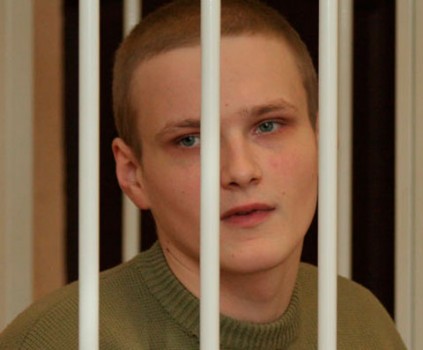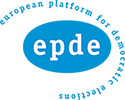Analytical review of the trial of Mikita Likhavid
Conclusions by the Human Rights Center “Viasna”:
- Separate judicial proceedings against Mikita Likhavid are illegal, as the preliminary investigation into the 19 December 2010 events is not over yet, the fact of the mass riot, as well as their organization by concrete persons, has not been established.
- The practice of initiating separate proceedings enables the investigators to apply various fraudulent means, e.g. involving the victims who were not mentioned in the preliminary investigation materials in this particular case.
- The consideration of the case by court failed to provide evidence of the mass riot on 19 December 2010 in Minsk Nezalezhnastsi Square, that was accompanied by arson, damage, violence, destruction of property, armed resistance to law enforcement agents.
- The court failed to prove that Mikita Likhavid had committed an offence under Par. 2 Art. 293 of the Criminal Code, namely one or more direct unlawful acts typical of mass riots (arson, damage, violence, destruction of property, armed resistance to law enforcement agents). A couple of blows made by Mikita Likhavid at the wooden shield outside the Government House cannot, in our opinion, be considered as proof of damage of property, as the above-mentioned shield was not mentioned by the civil claimant (the Chief Economic Department of the Presidential Administration) among the list of damage property.
- No other evidence of Mikita Likhavid’s other actions in Nezalezhnastsi Square on 19 December 2010 was provided for the consideration of the court.
Considering this, the Human Rights Center “Viasna” believes that:
- The verdict pronounced by Minsk Partyzanski District Court, sentencing Mikita Likhavid to 3.5 years of imprisonment in a high-security penal colony, is illegal and politically motivated.
- Mikita Likhavid should be considered a prisoner of conscience and therefore the Human Rights Center “Viasna” demands his acquittal and immediate release.
Concise judicial observation report:
On 22 March 2011, Judge Mrs. Natalia Pykina of Minsk Partyzanski District Court began the consideration of the criminal charges brought against Mikita Likhavid. The hearing lasted for 4 days. The indictment was presented by state prosecutor Anton Zaharouski. The defendant was represented by Mrs. Darya Lipkina.
Indictment. According to the prosecutor, Mikita Likhavid committed an offence under Par. 2 Art. 293 of the Criminal Code – participation in mass riot. The investigators argues that Mikita Likhavid, together with a crowd, acting as an integral unit, committed violent actions, attempting to break into the Government House and damaging property. Meanwhile, other persons in the crowd had brought objects for damaging property and arson, and used them. As a result of these actions, the estimated material damage amounted at BYR 14 mln.
The state prosecutor entered a motion for involvement of 14 police employees as victims in the case, the persons who were not mentioned in the case file during the preliminary investigation, Thus, the total number of alleged victims reached 29 persons.
The defense entered a motion for case suspension due to the fact that the investigation into the 19 December 2010 events was still underway and the fact of mass riot had not been established. The defense also objected to the involvement of the 14 additional victims in the proceedings. The motion was not granted by the court.
During the examination of Mikita Likhavid by the prosecutor, the defendant said that he had come to the rally in search of his friend. The he proceeded to Nezalezhnastsi Square, together with other demonstrators, and found himself outside the Government House. He then, being affected by the crowd, struck the wooden shield outside the House for a couple of times. He partially admitted his guilt and regretted his actions.
Victims. All the 29 victims are policemen who were on duty and arrived at the Government House to stop the unlawful actions by the demonstrators, who broke the windows of the House. The 15 victims mentioned in the case file had earlier acted as victims in the criminal cases against Russian national Gaponov and Breus, as well as that against Dzmitry Miadzvedz. The 14 additional persons were recognized as victims on 22-24 Februrary, following the initiation of separate proceedings against Mikita Likhavid.
The victims said that they had not seen who and how broke the windows. The majority of them claimed that the demonstrators had used violence against them: they were reportedly beaten at their shields, heads and bodies. Two of them were reportedly sprayed with a fire extinguisher. The victims testified that the number of those involved in the violent actions outside the Government House was limited to 35-50 persons, including journalists.
The victims claimed that they had received injuries of various degrees and had to seek medical aid at the Interior Ministry hospital. However, in 22 out of 29 cases, a medical examination failed to register any injuries. All the injuries were only registered in the hospital incoming register, which cannot be considered as proper evidence of bodily injuries. The injuries were not substantiated by any other evidence, apart from the victims’ testimonies. All the victims said that they had not seen any arms, arson or armed resistance. None of the victims argued that Mikita Likhavid was the person they had seen on 19 December 2010. Nor did they claim that they had suffered as a result of his actions.
Witnesses. There were 8 witnesses in the courtroom.
Policeman Aliaksandr Bahdanau, who reportedly drew up a police report against Likhavid and was mentioned as a witness in it, argued that Mikita Likhavid had taken part in the unauthorized rally, crying out slogans and defying police warnings, and thus violated mass event regulations, committing an offence under Par. 1 Art. 23.34 of the Civil Code, and was detained by policeman Bahdanau. On 20 December 2010, Likhavid was found guilty of the offence and sentenced to an administrative arrest.
Witness Bahdanau said that he could remember nothing about Likhavid’s actions in the Square. Bahdanau said that he considered Likhavid guilty of committing the offence only after he saw him in the detention center.
Mikita Likhavid said that he had not seen Bahdanau before and that the policeman had not detained him.
On 29 March the defense lawyer entered a motion for attendance of seven witnesses, including Aliaksandr Milinkevich. All the defense witnesses spoke favourably of Likhavid.
Another witness Aleh Hulak, leader of the Belarusian Helsinki Committee, said that, on their way to Nezalezhnastsi Square, the demonstrators had not committed any violent actions. Nor did they use any objects. Mr. Hulak said that had not heard any appeals for violence in Nezalezhnastsi Square. He then saw some 10 persons breaking the windows of the Government House. He also said that he was surprised that the people were not stopped by the plainclothes policemen standing nearby. 20-30 minutes later, he heard opposition politicians calling upon the people to stop breaking the windows and resist provocations. Aleh Hulak said that the police had evidently provoked the demonstrators by their inaction.
Case file and evidence. The court screened a 30-minute video covering the 19 December 2010 events. The video showed Likhavid pushing the wooden shield and holding a police shield.
The defense lawyer repeatedly requested to screen additional videos covering the events. However, the motions were dismissed.
The court proceedings were over on 29 March.
In his pleading, the state prosecutor argued that Mikita Likhavid’s guilt had been completely established and requested to sentence him to 4 years of imprisonment in a high-security penal colony. Among the attenuating circumstances mentioned by the prosecutor were Likhavid’s positive references, his young age and absence of earlier prosecutions.
Defense lawyer Mrs. Lipkina dwelt upon the provisions of Article 293. She said that Belarus lacks judicial precedents, the current criminal case being the first. The counsel stressed that mass riots should be accompanied by a complex of circumstances: arson, damage, violence, destruction of property and armed resistance to law enforcement officials. The law does not mention the actions separately, specifying that the crowd should be an integral, raging force. She said that the investigation had failed to establish any facts of arson or armed resistance. As for riotous damage, she supposed that it should have been large-scale actions, accompanied with robbery, destruction of property and violence.
The lawyer emphasized the fact that 22 out of 29 victims had failed to prove their injuries. She also said that the involvement of the 14 additional victims was a violation of criminal procedures.
Speaking of the defendant’s actions, Mrs. Lipkina said that Mikita Likhavid’s participation in the mass riot was limited to the destruction of property. No other evidence was presented in the courtroom. At the same time, she said that the above-mentioned wooden shields had not been mentioned by the civil claimant. Therefore, the lawyer considered Mikita Likhavid’s guilt not established due to lack of the elements of offence in his actions. The counsel asked the court to consider Likhavid’s positive references and acquit him.
Verdict. Mikita Likhavid was found guilty of committing an offence under Par. 2 Art. 293 of the Criminal Code and sentenced to 3.5 years of imprisonment in a high-security penal colony.


















